The 20 best day hikes to tackle around Western Australia
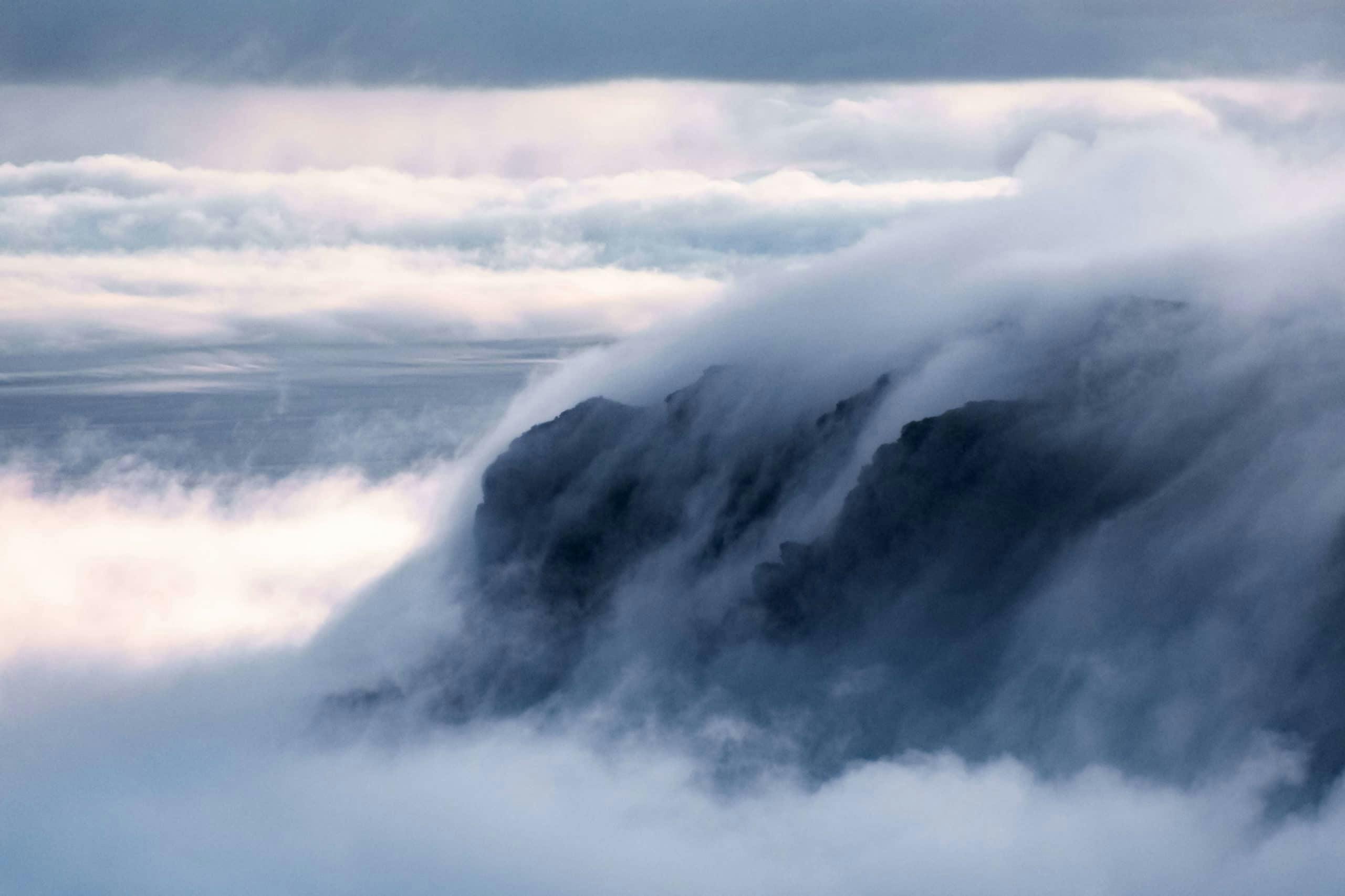
Being the size of most medium sized countries, Western Australia has a great variety of landscapes to behold.
With a small population density and a large wilderness stretching across the horizon, there are some fantastic natural places waiting to be explored.
One of the best ways to see WA is on foot, so here are some of the best day hikes you can experience:
Bluff Knoll/Pualaar Miial (Stirling Range National Park)
The crown jewel in the Stirling Range National Park, Bluff Knoll is a WA rite of passage for all those that enjoy the outdoors. A tough but rewarding climb, you start at 500 above sea level at the car park and on a clear day, can stare up at the imposing form of the mountain. The highest peak in the South West of WA, once you reach the summit at 1095m, the views looking over the rest of the Stirling Range, off to the Porongurups and when conditions are right, Albany.
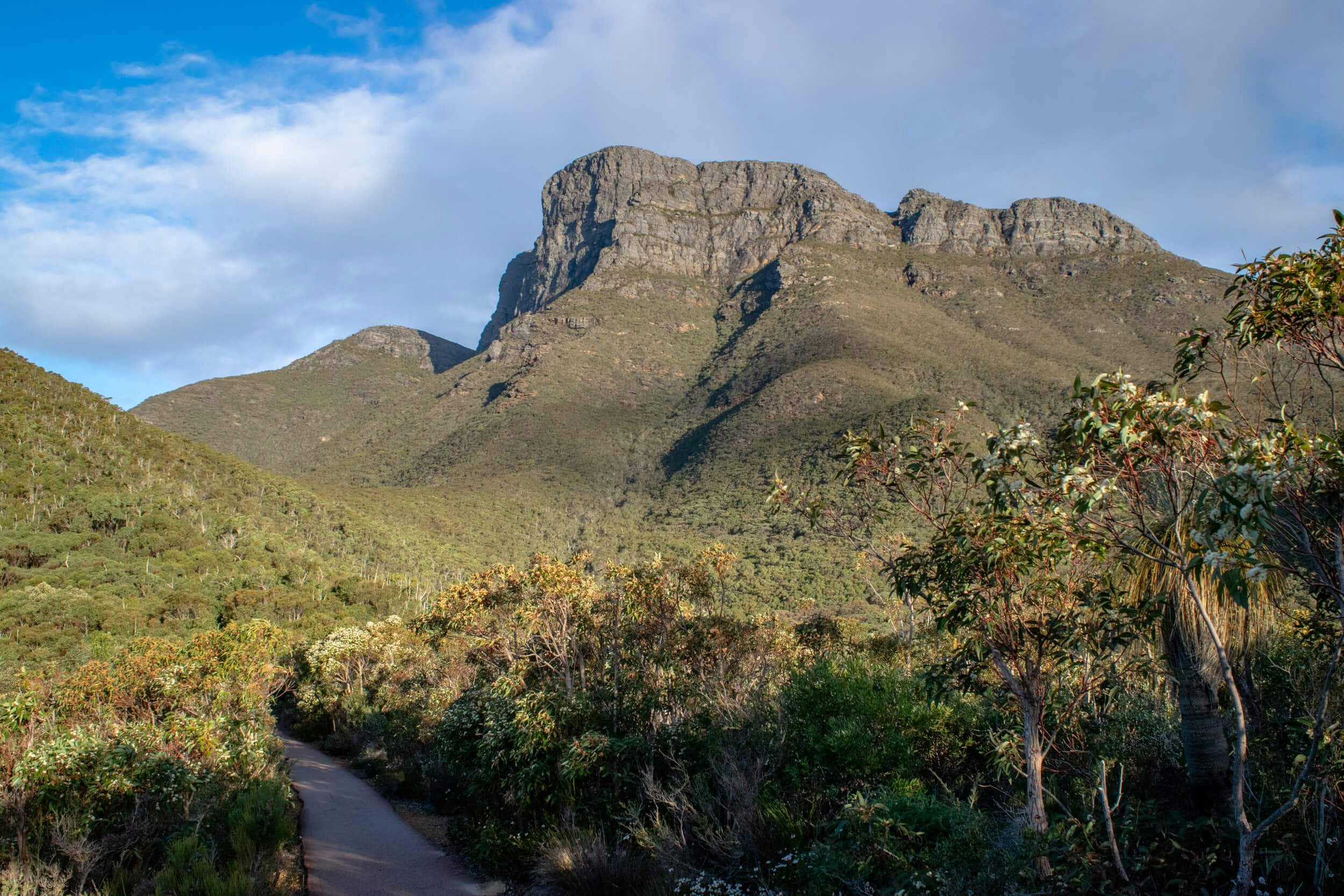
One of the only places in WA that gets semi-regular snow in the depths of winter, there have been plenty of iconic photos of a snow-capped summit. Still recovering after two devastating bushfires in 2018 and 2019, the trail has been repaired with a new metal bridge and plenty of new steps. If you’re an early riser, one of the best ways to experience Bluff Knoll is to get there in the dark and hike up to watch the sunrise. With the changing weather that the Stirling Range is famous for, make sure you are prepared with some warmer clothes, a rain jacket and at least 2L of water per person.

Where: Stirling Range National Park
Length: 6.3km (Return)
Difficulty: Moderate to Difficult
Best Time to Visit: All Year Round
Wadjemup Bidi (Rottnest Island/Wadjemup)
Perth’s island playground just 20km off the coast from Fremantle, Rottnest is full of fun outdoors activities to quench the adventure bug. The Wadjemup Bidi is the name of the hiking trail network and is one of the best ways to explore the island. With five walking trails to enjoy, all well signed from the main settlement, they cover all the best bits of the island and many places that you can only reach by foot.
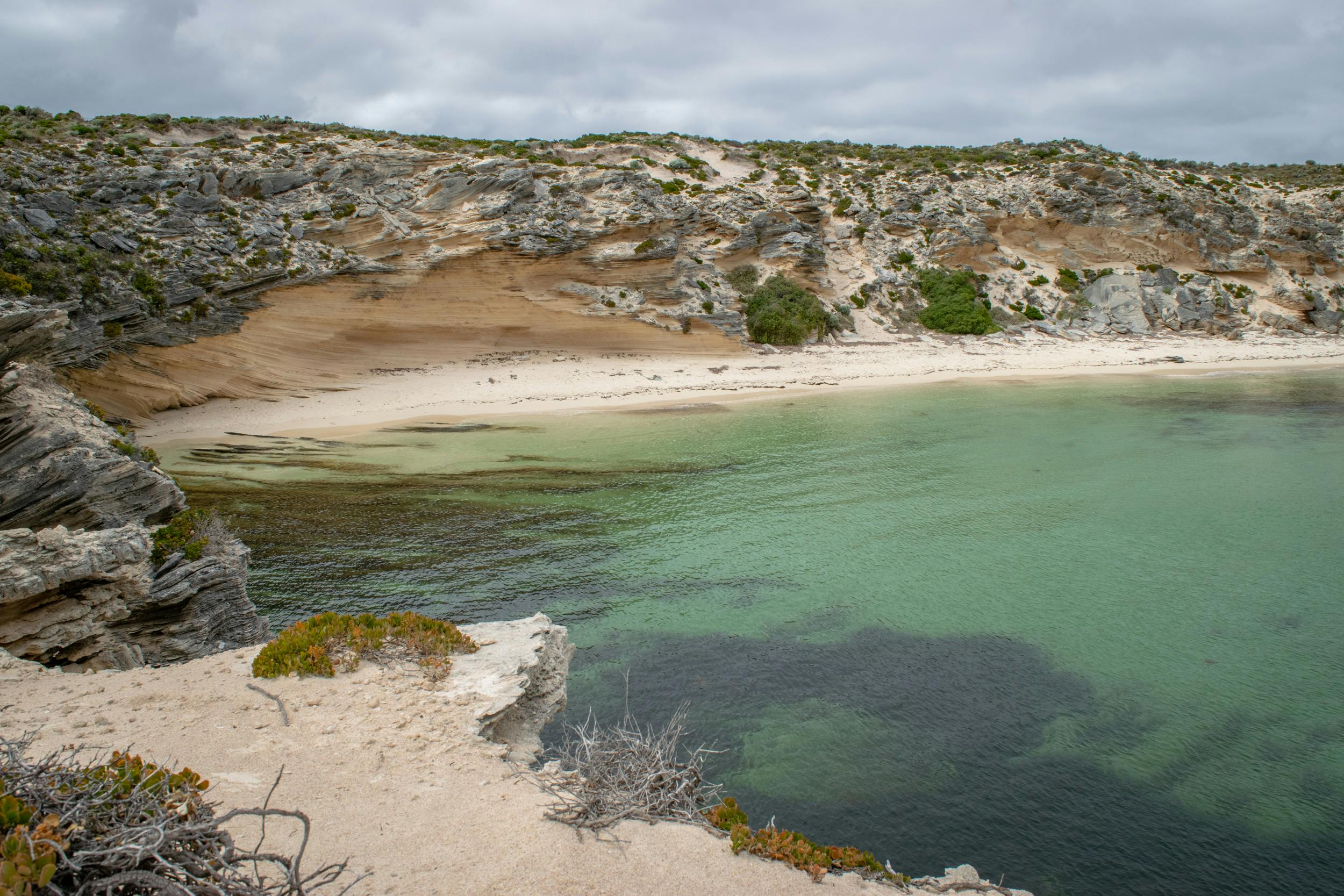
All accessible along the bus stops around the island, you can pick and choose which ones you want to do without worrying about how to get back to the main settlement. Bring your flippers and snorkel to enjoy one of many fantastic snorkelling spots around the island or simply lay your towel down on a secluded beach and relax in the sun.
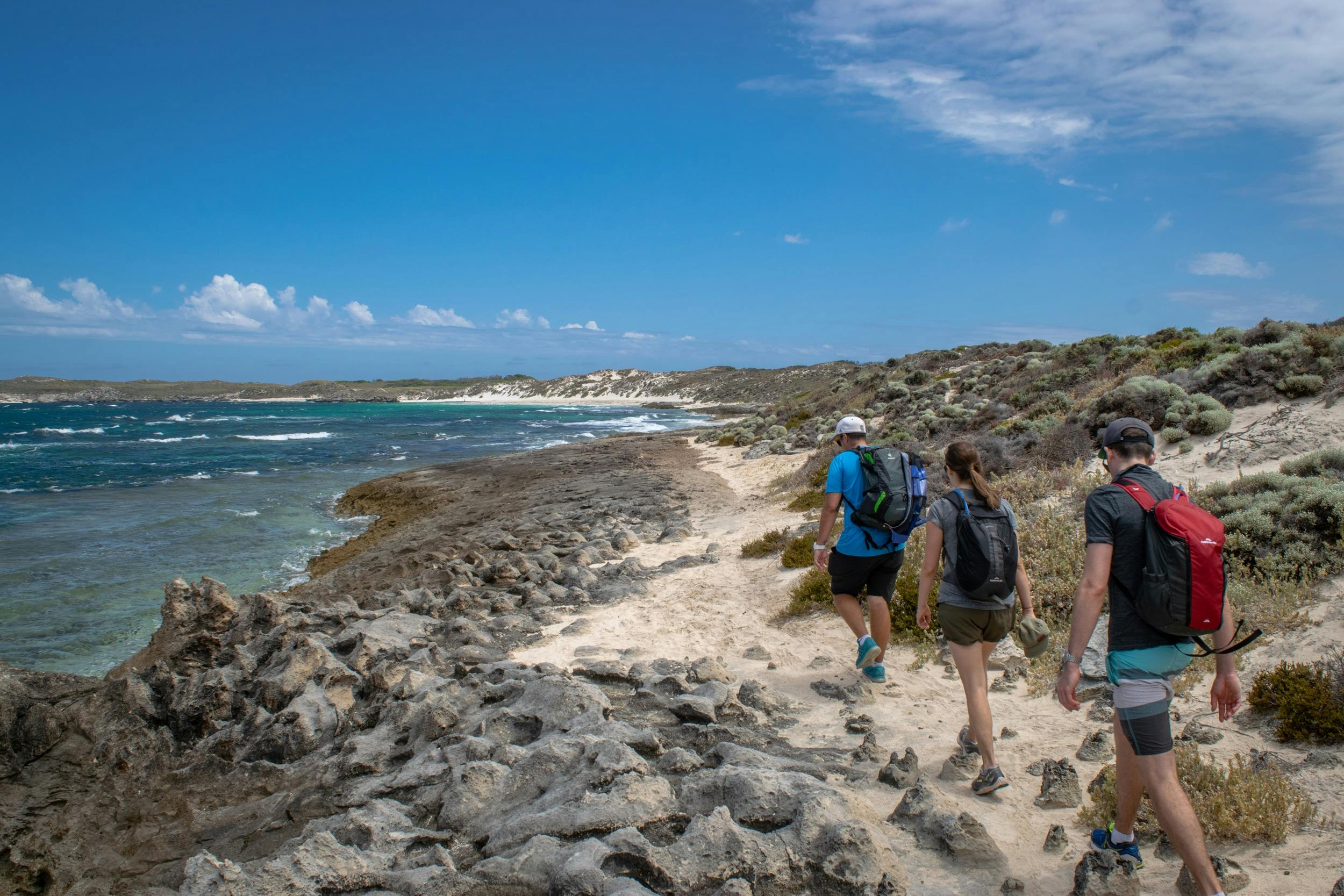
Where: Rottnest Island
Length: 6km to 9.5km (One Way)
Difficulty: Easy to Moderate
Best Time to Visit: All Year Round
Le Grand Coastal Trail (Esperance)
Cape Le Grand is home to the idyllic Lucky Bay, the whitest beaches in Australia and the granite slopes of Frenchman Peak. Hidden within the tourist brochure and offering up the best way to explore this amazing piece of WA is the Le Grand Coastal Trail, a 15km trail linking the granite headlands with the many secluded bays of this rugged landscape.
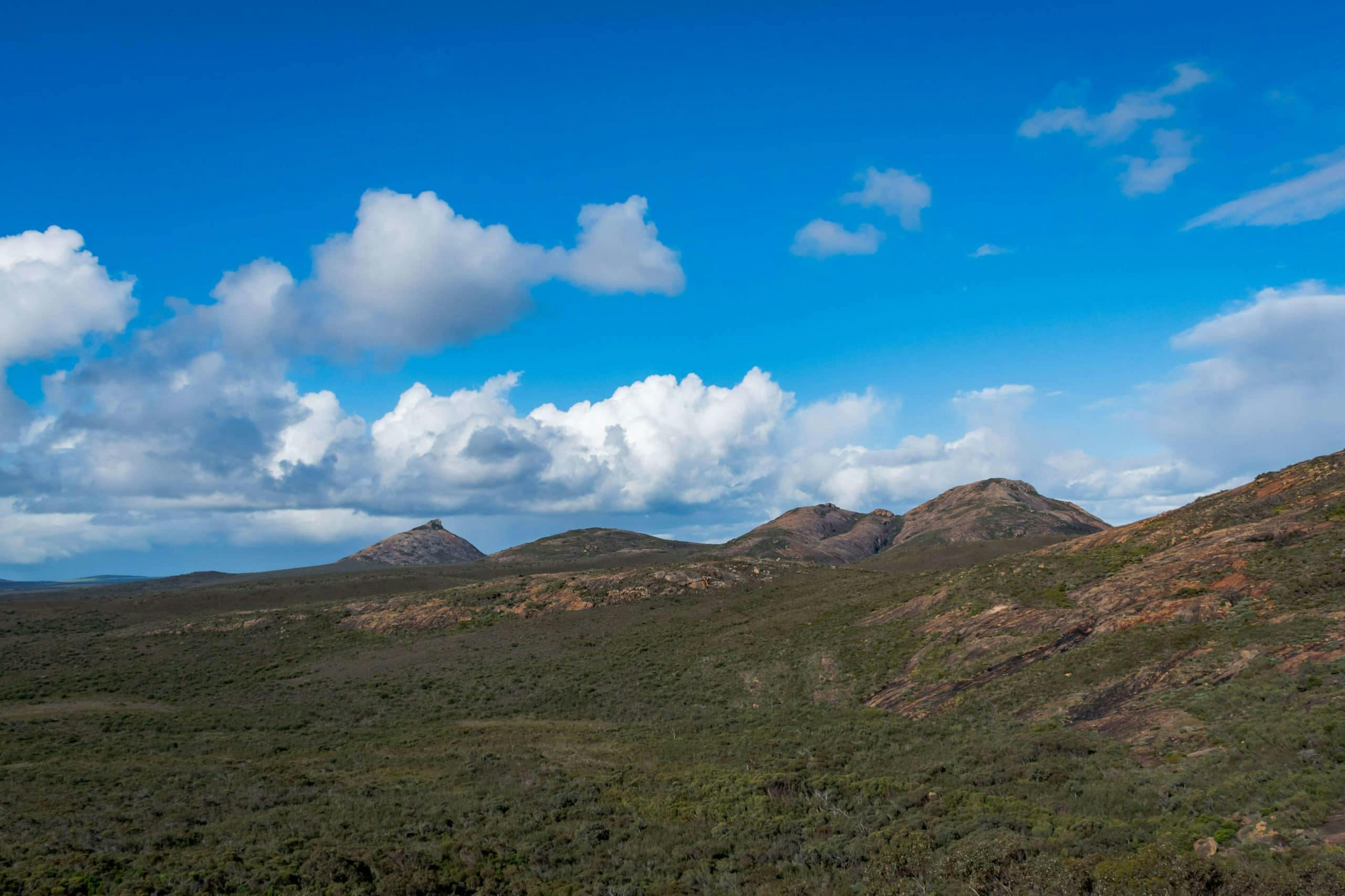
Exploring some of the most iconic spots in the park including Rossiter Bay, Lucky Bay, Thistle Cove and Hellfire Bay, it’s the sections in between these that offer up the most unique aspect of this walk. If 15km of coastal walking isn’t enough then tackle the very steep climb up Mount Le Grand and marvel at the views looking back towards Frenchman Peak and Esperance. With no shortage of stunning scenery and limitless photogenic locations, this is an easy inclusion on this list.
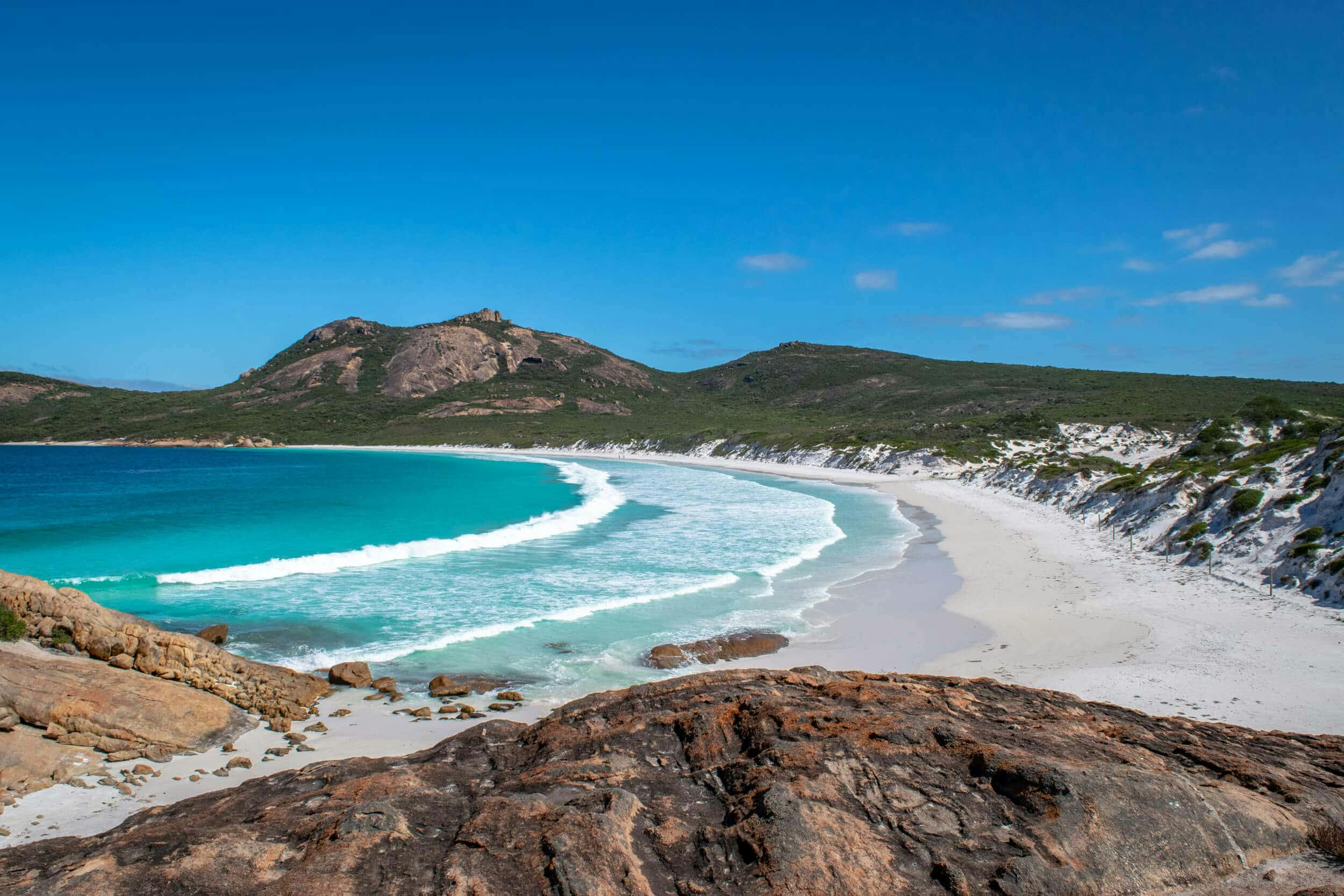
Where: Cape Le Grand National Park
Length: 15km (One Way)
Difficulty: Moderate
Best Time to Visit: Autumn through Late Spring
Bald Head Walk Trail (Albany)
Albany is home to some great hikes and Bald Head sits as the cream of the crop with a mix of stunning views, a sense of wildness and a hike that will leave you feeling very accomplished. Extending out towards the Southern Ocean along the Flinders Peninsula, the first section along the limestone ridge is the most famous thanks to those Instagram perfect scenes.
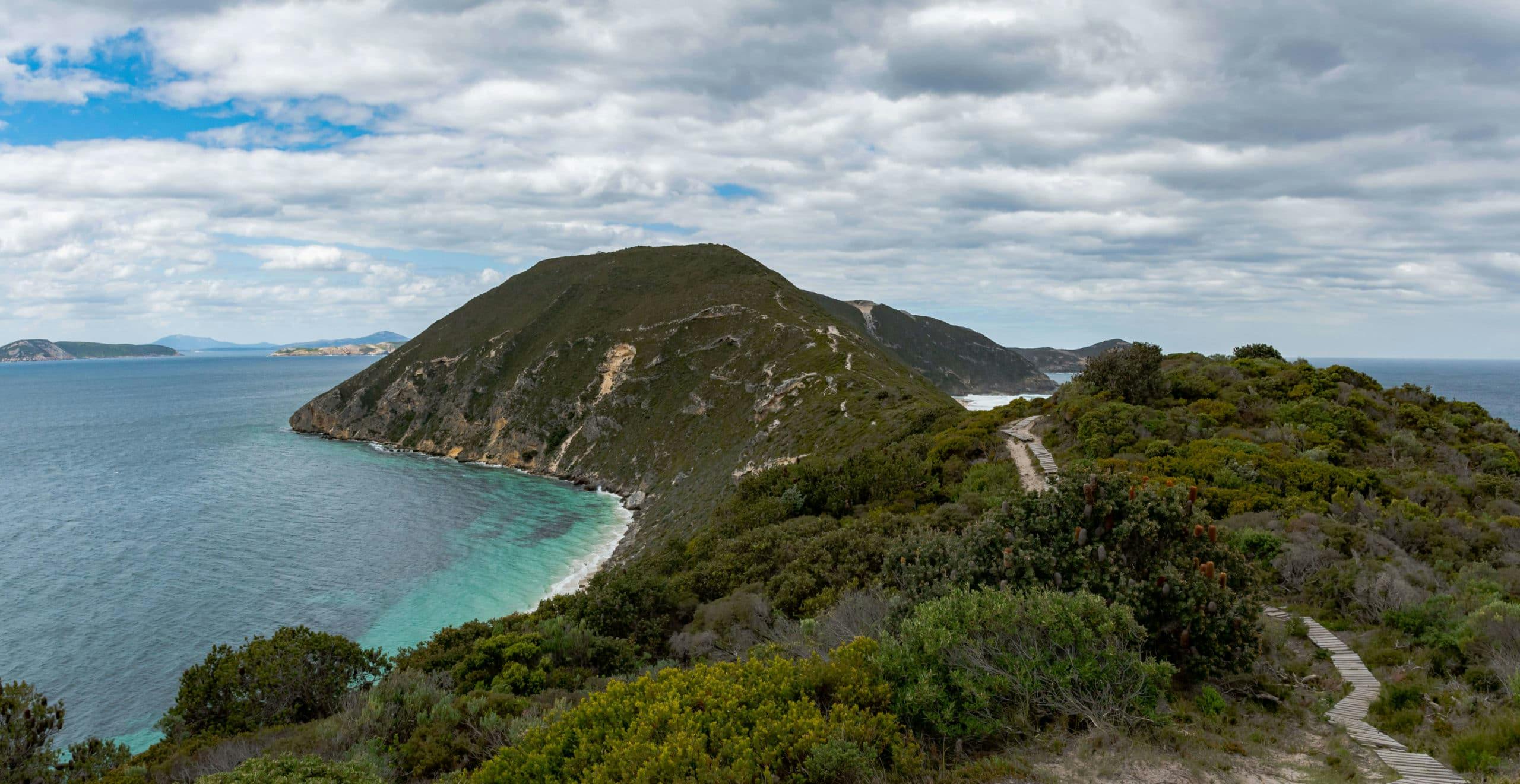
Keep going through the wildflower lined coastal heath and you’ll reach the granite platforms and domes that are great fun to explore. With such a variety of scenery to enjoy, a feeling of isolation once you venture beyond the limestone peaks and a fantastic finishing point at Bald Head, this hike will leave a lasting impression on anyone who completes it.

Where: Torndirrup National Park
Length: 12.5km (Return)
Difficulty: Hard
Best Time to Visit: Late Summer through Late Spring
Castle Rock Granite Skywalk (Albany)
The Castle Rock Granite Skywalk is one of the more recognisable features of the South West with the stainless-steel walkway providing an excellent way to experience the fantastic views on offer in the Porongurups. To get to the iconic viewing platform isn’t easy with a 2.2km hike through the Karri forest but luckily the scenery you get along the way is just as good as the destination.
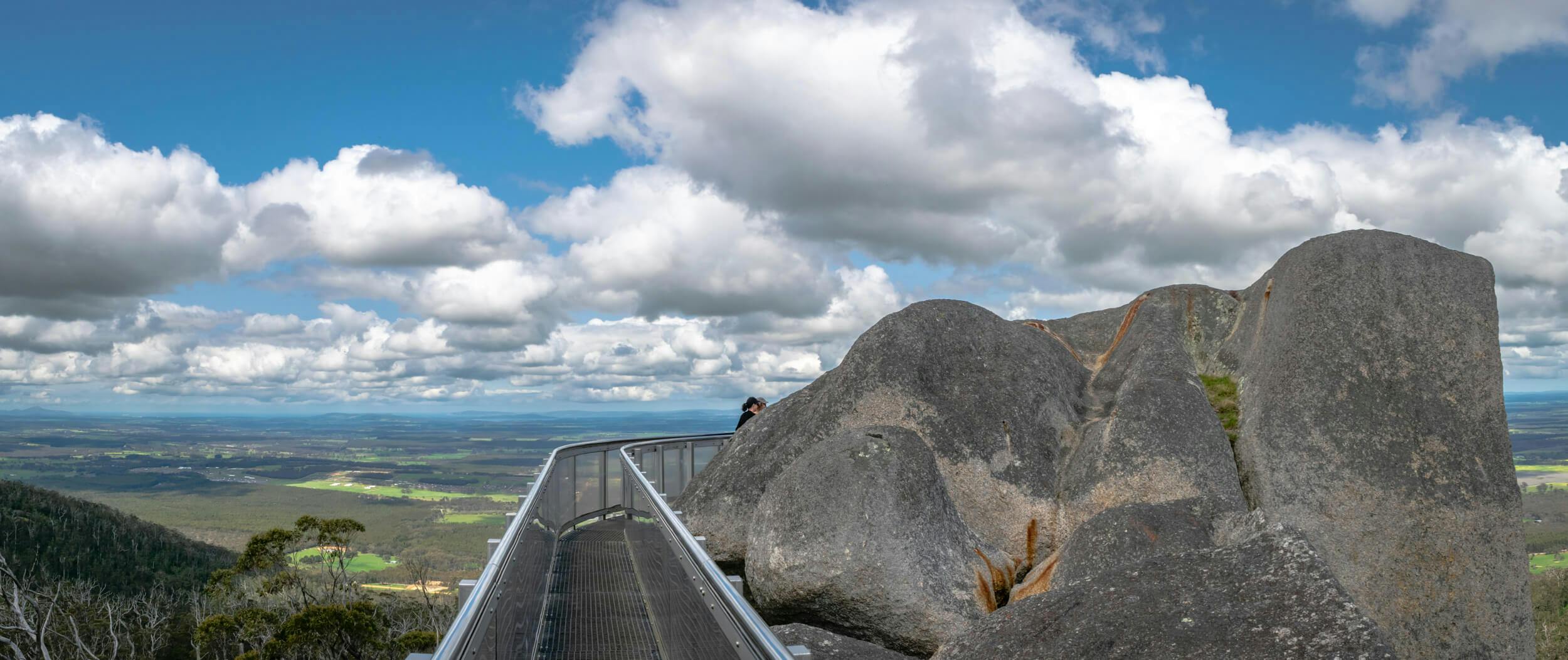
This localised pocket of Karri survives thanks to the run-off from the large granite domes along the ridge of the Porongurups and provides a magical world to explore before you reach the summit. Once you’re near the summit admire the gravity defying Balancing Rock and then clamber your way to the 7m tall ladder that must be climbed to reach the Granite Skywalk. All in all, a very fun experience and worth adding to any visit to the Albany region.
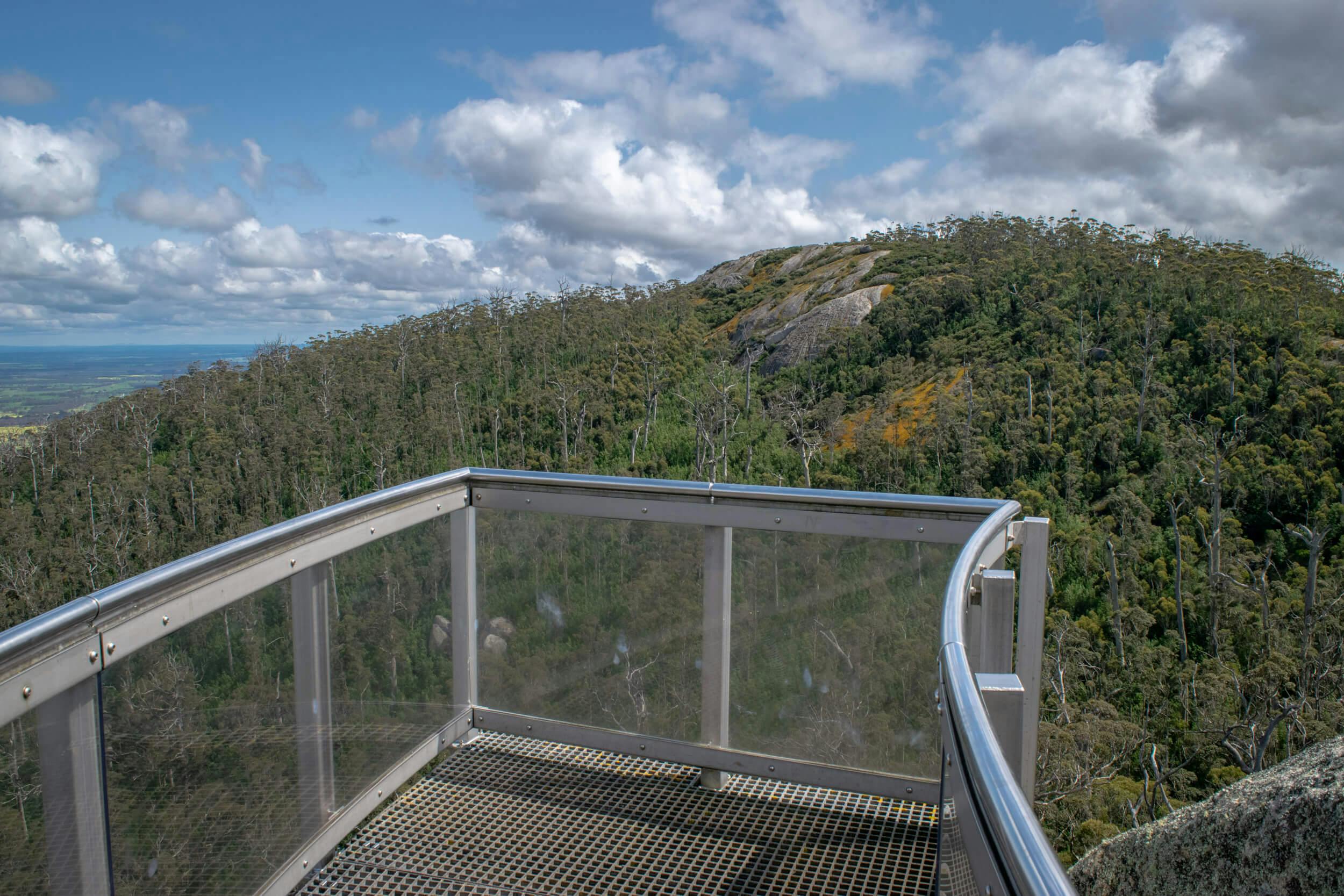
Where – Porongurup National Park
Length – 4.4km (Return)
Difficulty – Moderate
Best Time to Visit – All Year Round
Hakea Trail (Fitzgerald River National Park)
Fitzgerald River National Park is a hidden delight located between Albany and Esperance and is a UNESCO recognised biosphere that is home to dozens of plant species only found in this one location. The most iconic of these is the colourful Royal Hakea and it lends its name to the 23.5km Hakea Trail that traverses the eastern side of the park.
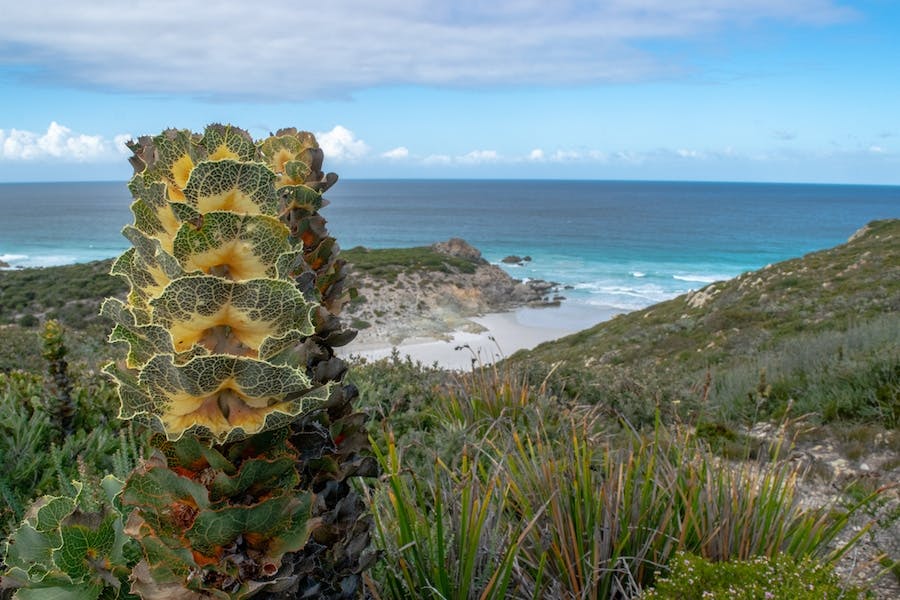
While a car shuffle is needed to do the whole thing (proper 4WD required at the Quion Head end), the walk can be broken up into smaller sections that will provide just as much enjoyment. You can expect stunning coastline views, interesting geology, fascinating flora and an abundance of fresh air. Keep an eye out for whales going along the coast from July to October.
Where – Fitzgerald River National Park
Length – 23.5km (One Way)
Difficulty – Hard
Best Time to Visit – All Year Round
Warren River Loop Trail (Pemberton)
Located just outside of Pemberton in the beautiful Karri forests of the South West is a magical hike on the banks of the Warren River. Starting at the base of one of the remaining fire lookouts you can still climb (Dave Evans Bicentennial Tree), wind your way through the forest giants, soaking in the crisp clean air they provide. The best part of this walk is when you start heading down to the edge of the river and into a world of moss, fungi and lichen.
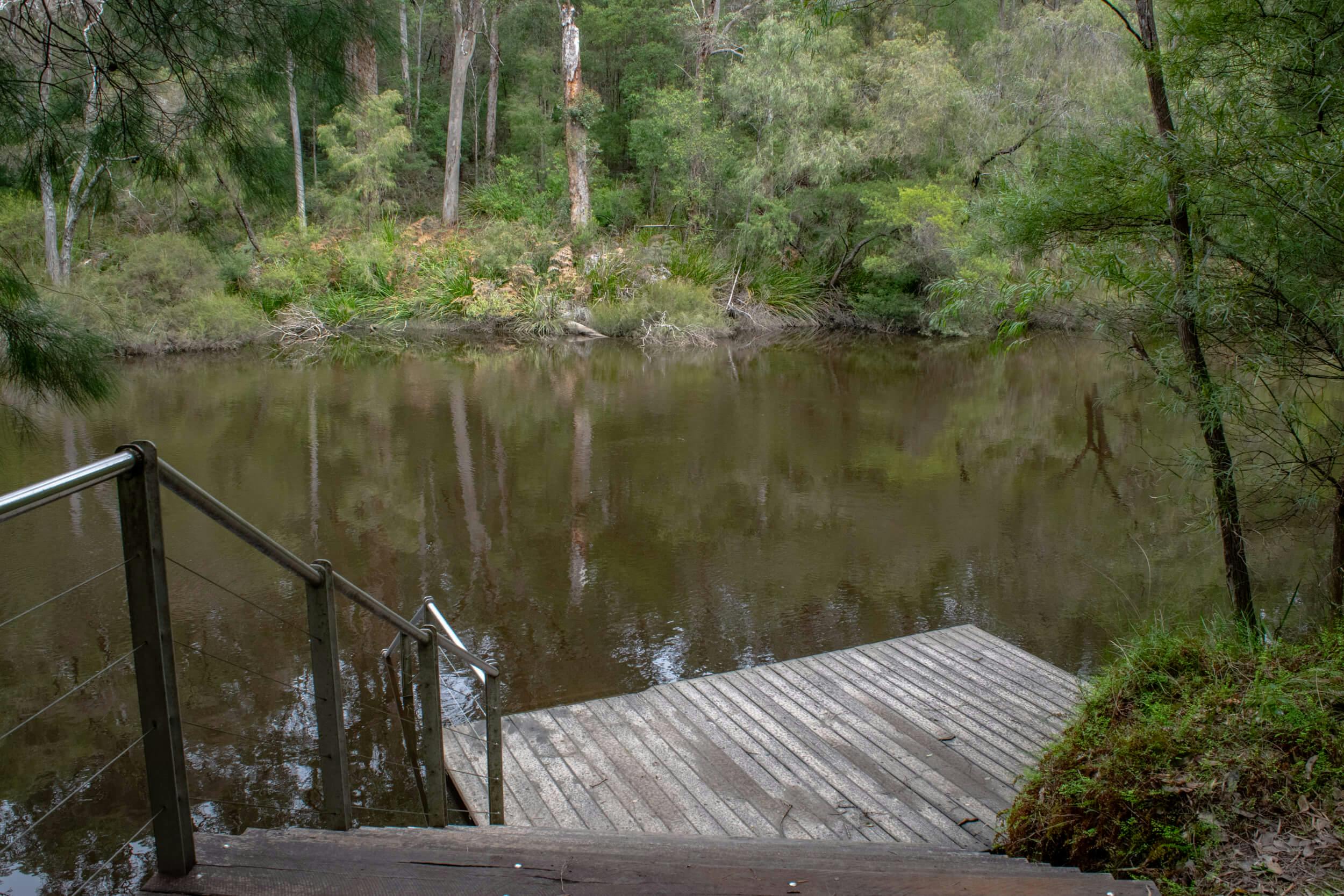
The dark tannin-stained waters of the Warren River flow gently through the valley with the towering trees making this feel like you have the place all to yourself. Snake through fallen logs, a kaleidoscope of greens and then up to a lookout that gives you a bird’s eye view over the stunning river valley.
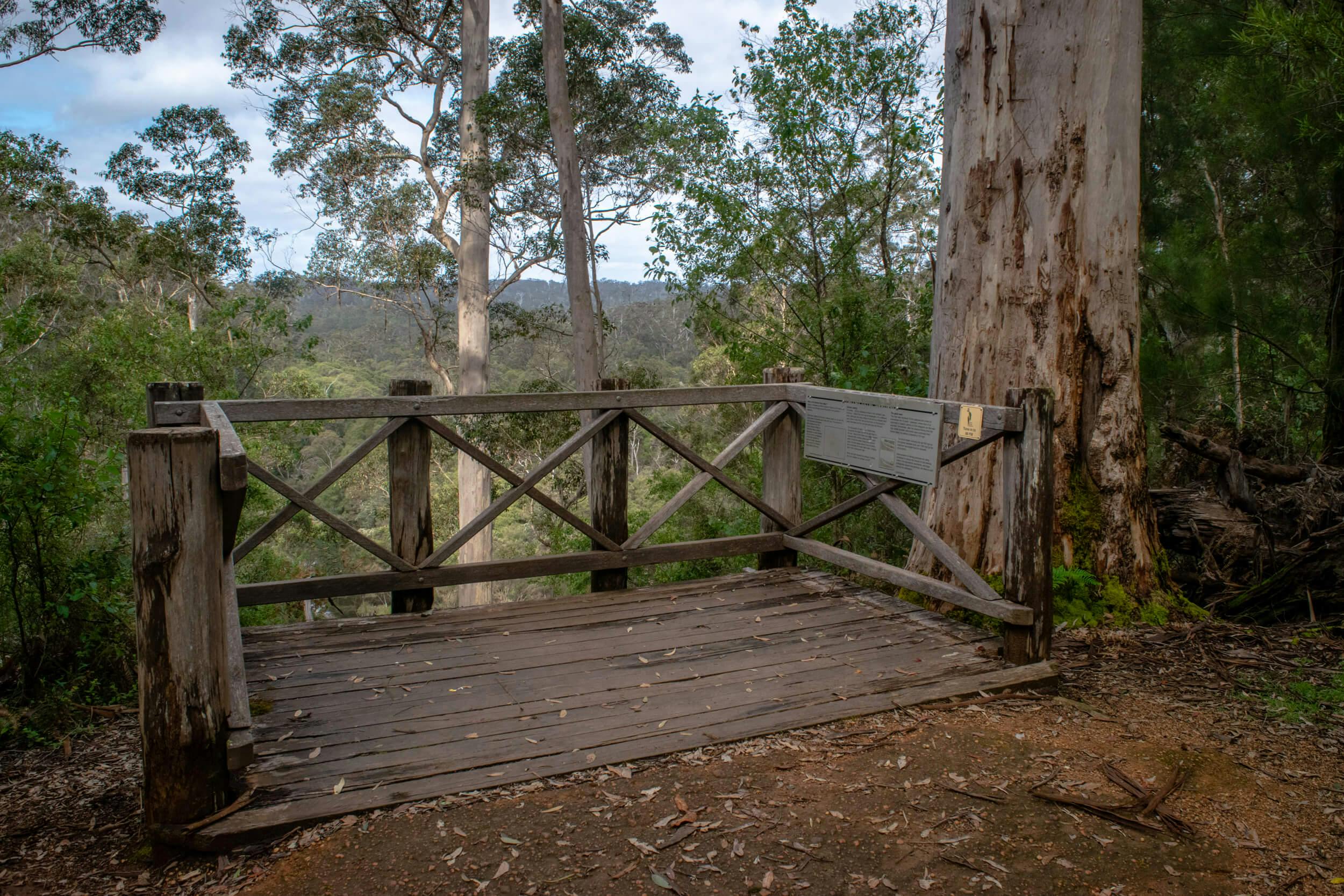
Where – Warren National Park
Length – 11.8km (Loop)
Difficulty – Moderate
Best Time to Visit – All Year Round
Mount Lindesay (Denmark)
Denmark is well known on the South Coast of WA for its great beaches, wineries and breweries but located north of the town is a nature lovers paradise. Climbing up to over 450m ASL, you start in the lush forests lining the banks of the Denmark River and begin a slow descent over 5km to reach the summit. Hike this in winter through to late spring and along the way you will see a great variety of wildflowers and orchids that light up the forest floor.
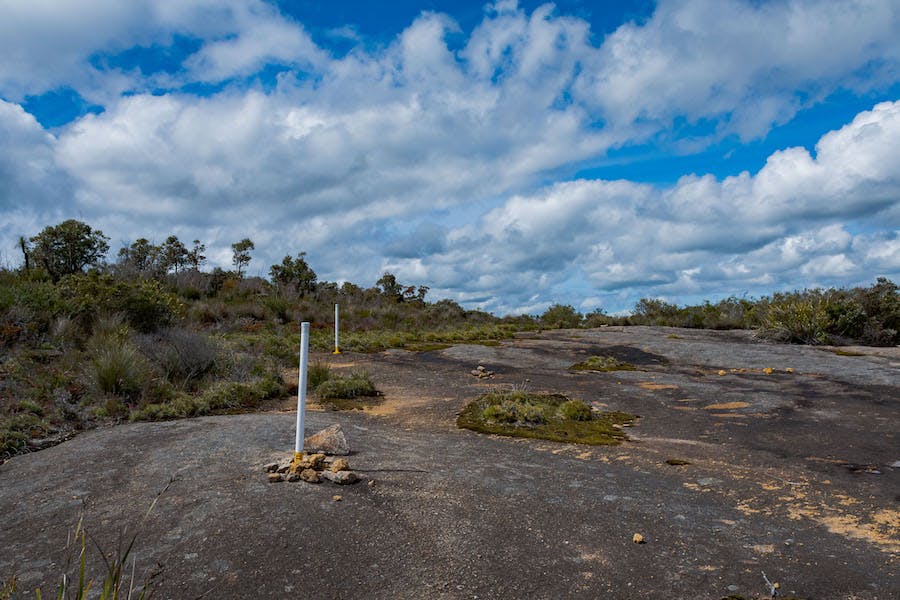
Watch the landscape transition from forest into granite slopes and the views across the surrounding area really start to open up. There is a short 300m loop on the relatively flat summit for you to enjoy the epic vistas where you can spot the Stirling Range, Porongurups, Southern Ocean and across to the Walpole Wilderness.

Where: Mount Lindesay National Park
Length: 9.9km (Return)
Difficulty: Moderate
Best Time to Visit: – All Year Round
Mount Frankland (Walpole)
The Walpole Wilderness is a really special place filled with endless forests, open plains, rugged coastline and ancient granite peaks. One of the more prominent peaks in the area is Mount Frankland and it provides an opportunity to gaze upon the surrounding landscape and appreciate its true beauty.
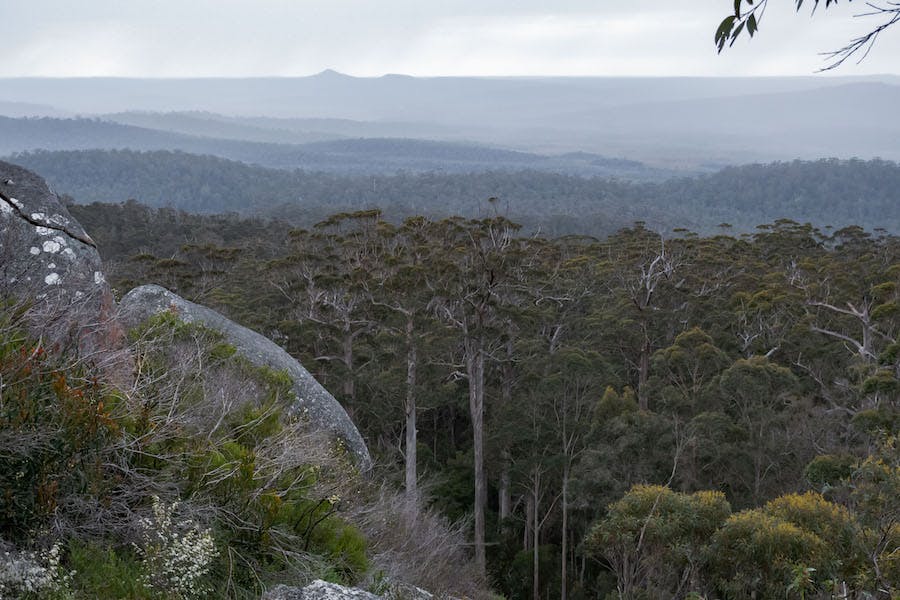
Starting off in the Karri forest near the car park, there is a short there and back walk to the Walpole Wilderness Lookout that provides some great views looking towards Mount Roe and the abundant forests that lie between these two places. The real treat here is the loop walk that takes you around the base of the impressive granite dome and then up to the top via a set of steep metal stairs. The views from the top are magnificent and you can see why this place used to be a lookout for bushfire monitoring purposes.
Where: Mount Frankland National Park
Length: 2.5km (Loop)
Difficulty: Moderate
Best Time to Visit: All Year Round
Frenchman Peak (Cape Le Grand National Park)
The second hike on this list from Cape Le Grand and another popular destination for travellers to the Esperance area. An accessible hike that provides a little more to the experience than a simple summit, the calling card of Frenchman Peak is the large open cave near the top.
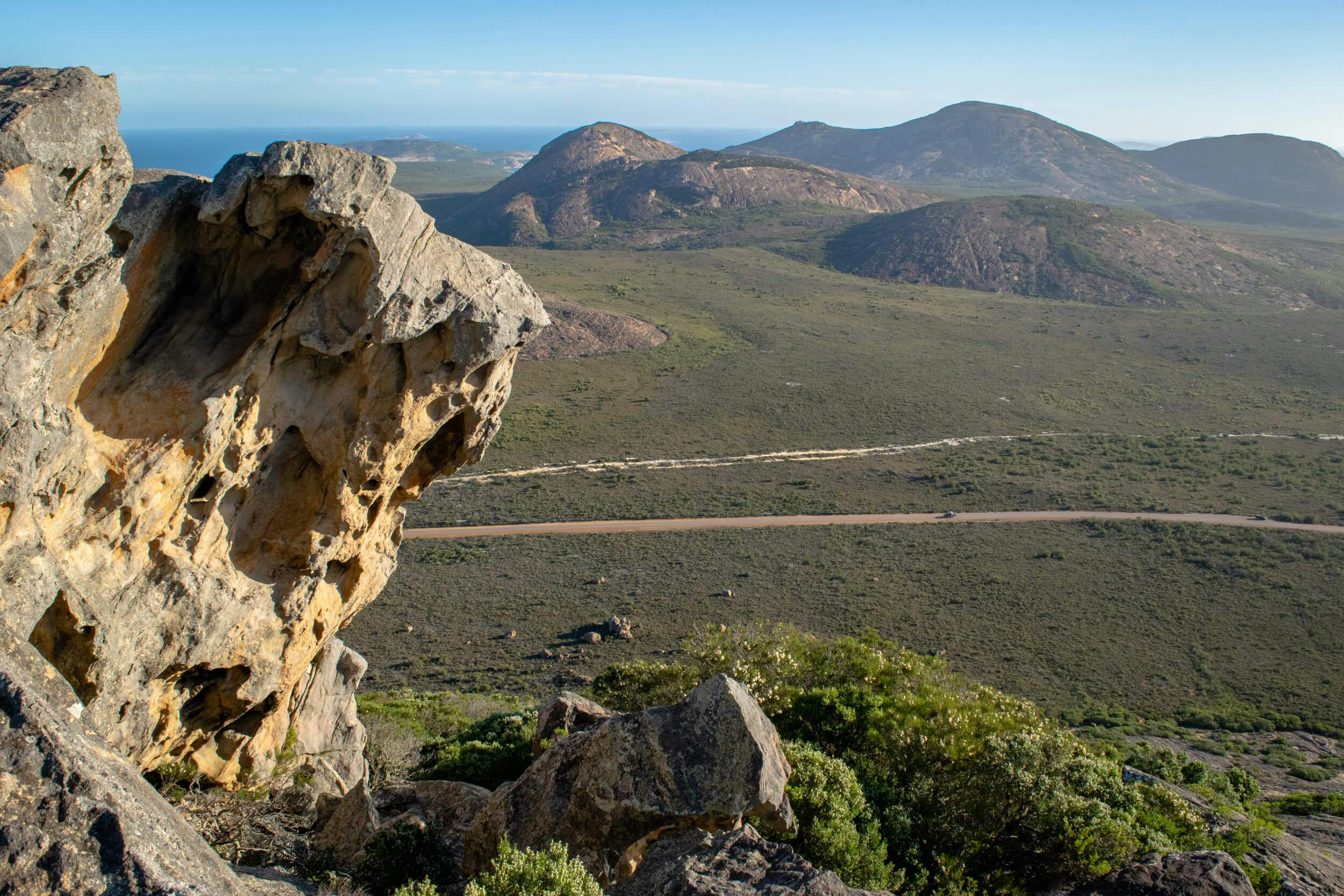
Carved out when sea levels were much higher than they are now, the surreal experience of being in a cave while looking out over the expansive views is pretty unique and one of the reasons people love this hike. With even better views overlooking the Archipelago of the Recherche and back towards Woody Island and Esperance, this is a very enjoyable trail if you can survive the almost sheer granite face that provides a fun challenge.
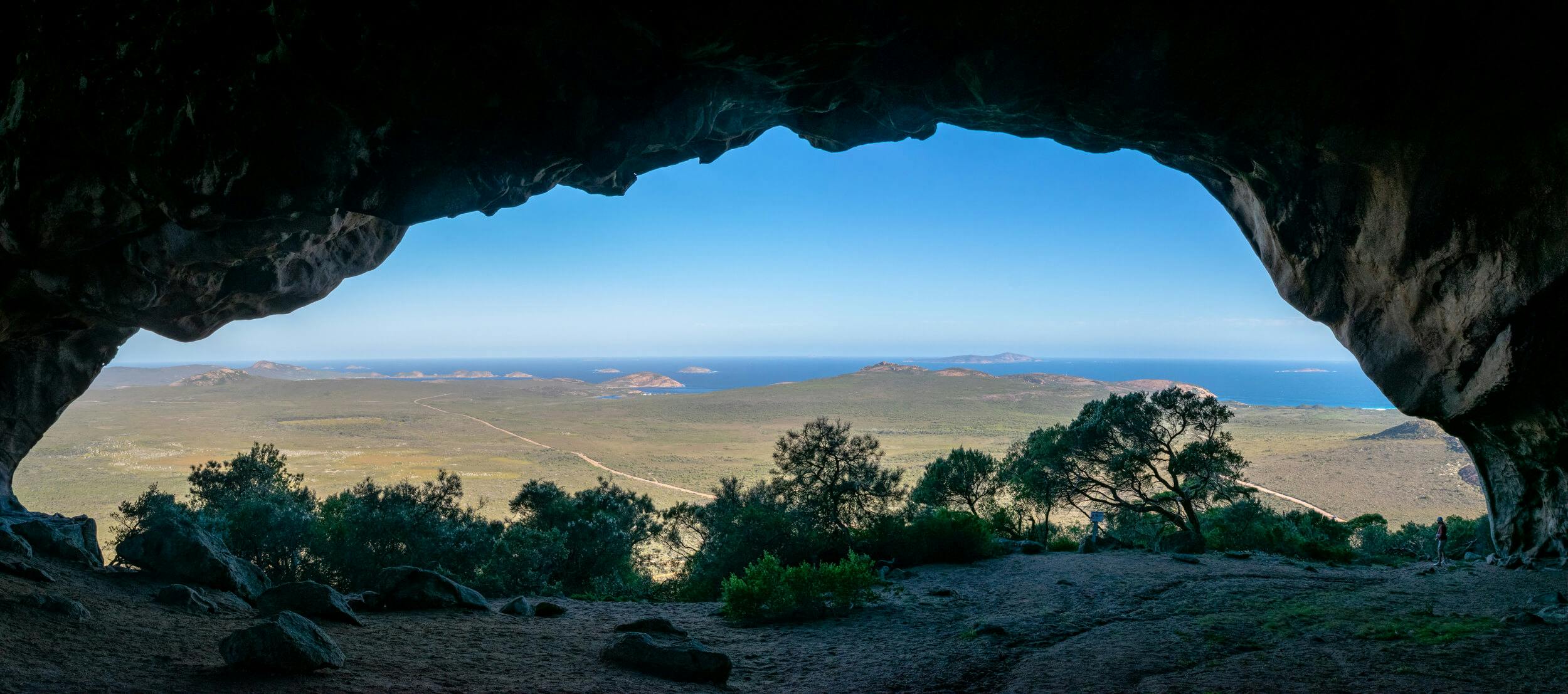
Where: Cape Le Grand National Park
Length: 2.5km (Return)
Difficulty: Moderate to Hard
Best Time to Visit: All Year Round
Jabitj Trail (Collie region)
Located to the west of Collie is the lovely Wellington National Park is the Jabitj Trail that takes you on the pleasant meander along the Collie River from Wellington Dam to Honeymoon Pool. One of three day hikes within Wellington National Park, the Jabitj Trail is the pick of the bunch thanks to the fantastic scenes you’ll get along the river and the quality of the Jarrah forest through here.
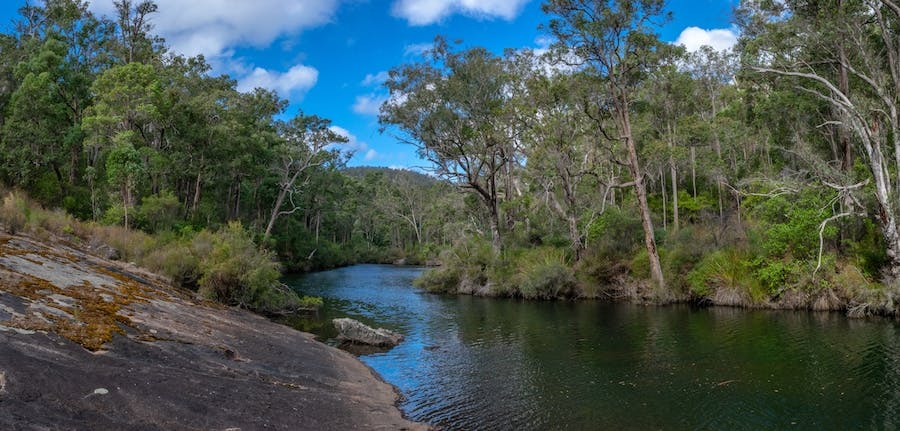
A good mix of river walking and forest provides a lot of variety to this hike and it really showcases the natural beauty of the area well. Finishing at Honeymoon Pool is always a positive with this popular spot being home to some picturesque scenery and a great place for a swim during the warmer months.
Where: Wellington National Park
Length: 6.3km (One Way)
Difficulty: Moderate
Best Time to Visit: Autumn Through Late Spring
Beedelup Falls (Pemberton)
Holiday makers to the South West are spoilt for choice when it comes to nice trails and one of the best near Pemberton has to be the Beedelup Falls Walk Trail. Part of the Karri Explorer loop you can do from town, there is more to Beedelup Falls than just the main waterfall with a 4.5km loop trail.
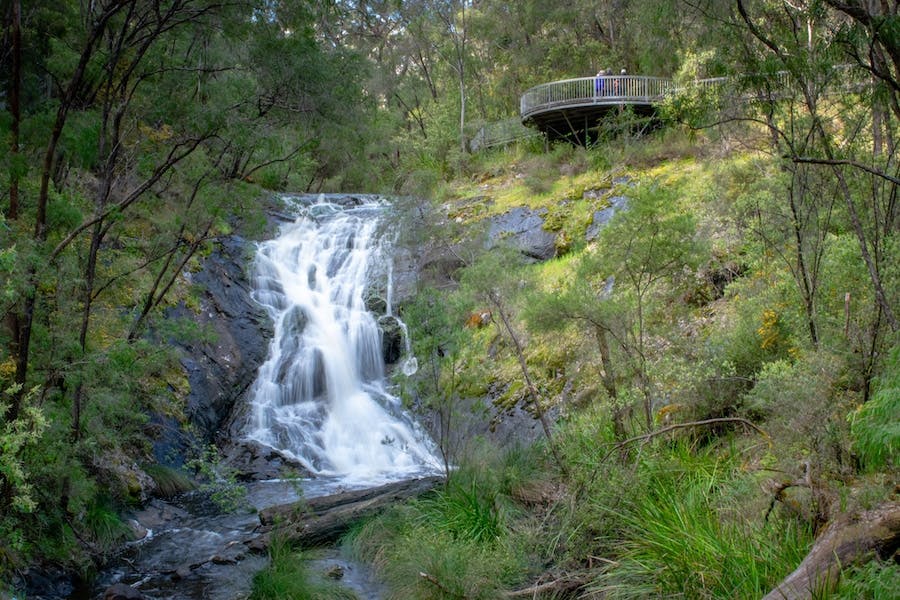
Taking in the beautiful Karri forest that surrounds Lake Beedelup, you pass right through a WA holiday favourite in the Karri Valley Resort before doing a complete circuit of the lake. Finish with an exploration of the boardwalks surrounding Beedelup Falls and play on the suspension bridge that is the best vantage point to see the cascading falls.
Where: Beedelup National Park
Length: 4.5km (Loop)
Difficulty: Moderate
Best Time to Visit: All Year Round
Luke Pen Walk (Albany)
Albany is usually associated with white beaches, cold weather, mountain ranges and the Anzac Centre but just outside of town is a fantastic river walk that during spring is one of the best places to see the epic wildflower display that makes WA so great. Hugging the banks of the Kalgan River before it flows into Oyster Harbour, this gentle trail takes you along forested sections and small rapids where the Minang people used traps to catch fish.
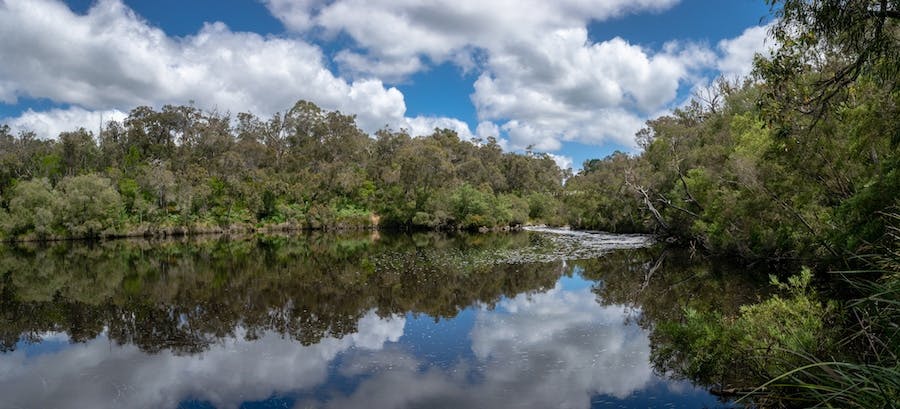
Really slow down along this trail and try and spot as many different wildflowers as you can, along with rare orchids as the trail was named after an environmental scientist who really loved this part of the world. Finishing at an old timber bridge, you get the pleasure of turning around and doing it all over again on the way back.
Where: Kalgan River, Albany
Length: 11.3km (Return)
Difficulty: Moderate
Best Time to Visit: All Year Round
Lesueur Walk Trail (Jurien Bay)
Located north-east of Jurien Bay on the stunning Coral Coast, Lesueur National Park is home to some really diverse flora and fauna that comes alive in the spring. To the naked eye the heathland extends out to the horizon and looks to be the same but the devil is in the detail here with a great biodiversity to be found. Keep an eye out for the various wildflowers that dot the edge of the trail as you make your way up to the summit of Mount Lesueur. At the top you’ll get sweeping views of the surrounding national park and bordering farmland. On the way back check out the Gardner Walk Trail that provides a different option to get back to the car park.
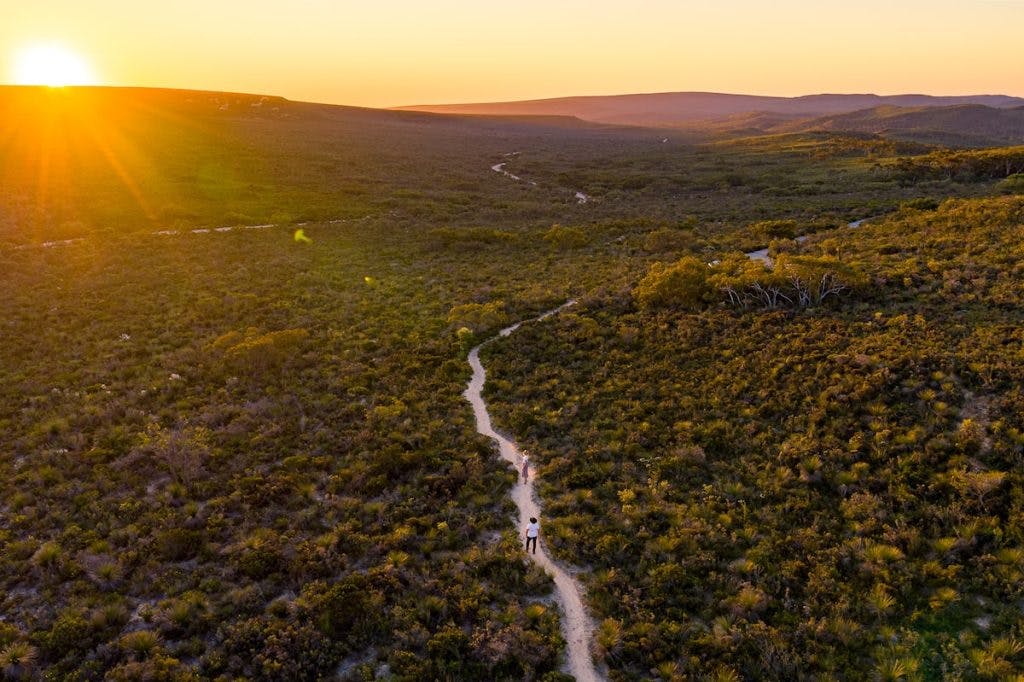
Where: Lesueur National Park
Length: 5km (Loop)
Difficulty: Moderate
Best Time to Visit: April to August
Mount Augustus (Mount Augustus National Park)
Located literally in the middle of nowhere in the north of the state, the nearest town to Mount Augustus is 300km away at Gascoyne Junction. While it takes a lot of effort and planning to get out there, the rewards you get are an isolated location with an ancient rock that is twice the size of Uluru and touted as the world’s biggest monolith. The 12km summit trail is a tough one, made tougher by the extreme heat that the desert provides but the views of the surrounding area will leave you in awe. A return trail option through the steep gully provides a different option coming back down and showcases the ancient geology that went into making this area what it is today.

Where: Mount Augustus National Park
Length: 12km (Return)
Difficulty: Difficult
Best Time to Visit: April to August
Camel Trail (Karratha region)
Located an hour’s drive from Karratha, the Camel Trail is a great way to experience the spinifex plains and red dirt that the Pilbara is famous for. Starting at Mount Herbert, the sweeping views of the hills to the east are something to behold and the endless horizons of green and gold spinifex is a wonderful sight.
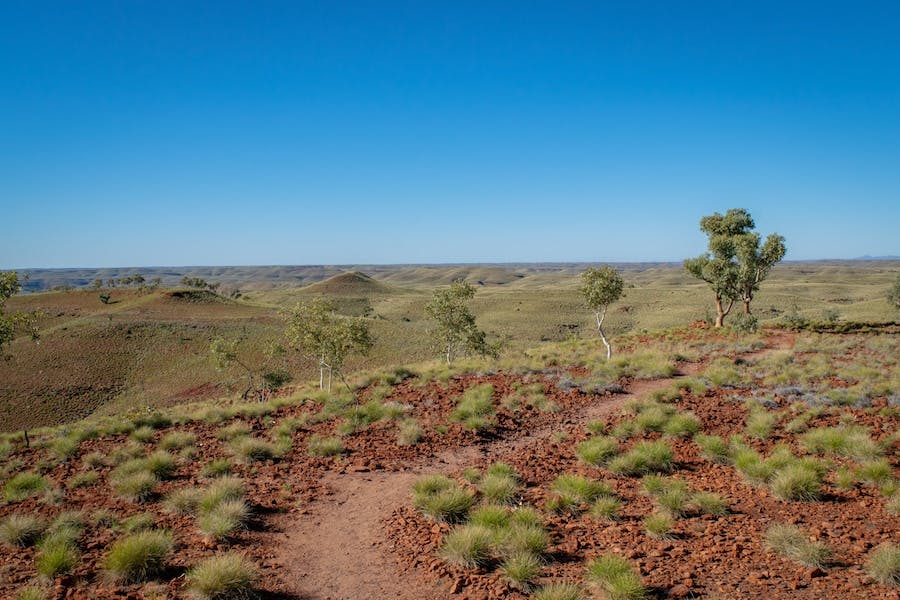
The trail follows old routes taken by the cameleers that used to operate in this remote location and the winding nature of the trail always provides a different viewpoint of the landscape. Pass seasonal springs and lookout benches as you make your way to the bottom of the hill and on to the beautiful finishing point at Python Pool. An oasis in the desert, this idyllic waterhole is great for a swim and a nice reward for the hike you’ve just completed.
Where: Millstream-Chichester National Park
Length: 8.1km (One Way)
Difficulty: Moderate
Best Time to Visit: April to September
Cathedral Gorge
When people think of the Kimberley they usually conjure up images of red dirt, crocodiles and the famous Bungle Bungles. These bee-hive like structures look like something from out of this world and people flock from all over the world to see them.

One of the best ways to experience them up close is to tackle the 2km Cathedral Gorge Walk. Taking you through the impressive gorge system all the way to unbelievable cavern located at the end. Carved out over millions of years, this spot will leave you breathless as you ponder the forces involved in creating such a space. This is just one of many trails exploring the Bungle Bungles but Cathedral Gorge has the biggest wow factor.
Where: Purnululu National Park
Length: 2km (Return)
Difficulty: Moderate
Best Time to Visit: April to September
Loop Walk (Kalbarri)
The premier trail in Kalbarri National Park and a great challenge, the Loop Walk explores what makes this area so unique. Starting at the Insta famous Nature’s Window, you head down into the wide gorges for a rocky and fun traverse along narrow ledges and sandy river banks. Following the Murchison River as it does a very convoluted meander in the shape of a loop, you’ll experience a landscape that has been shaped over countless wet seasons to what it is today. With photogenic scenes all throughout the gorge you won’t be left wanting for beautiful vistas and the workout is an added bonus.

Where: Kalbarri National Park
Length: 9km (Loop)
Difficulty: Moderate
Best Time to Visit: April to September
Weano and Hancock Gorge (Karijini)
Karijini is best known for the narrow and impressive gorges that have been etched into the ancient landscape over millions of years. Two of the best are located in the heart of the national park and when combined create an experience you’ll never forget. Make your way to the Weano Day Use area where both gorges are found and decide which one to do first. Weano Gorge is a good warm-up as it begins by heading along the rim of the gorge through the spinifex plains before dipping down and taking you back through the centre of the narrow space.
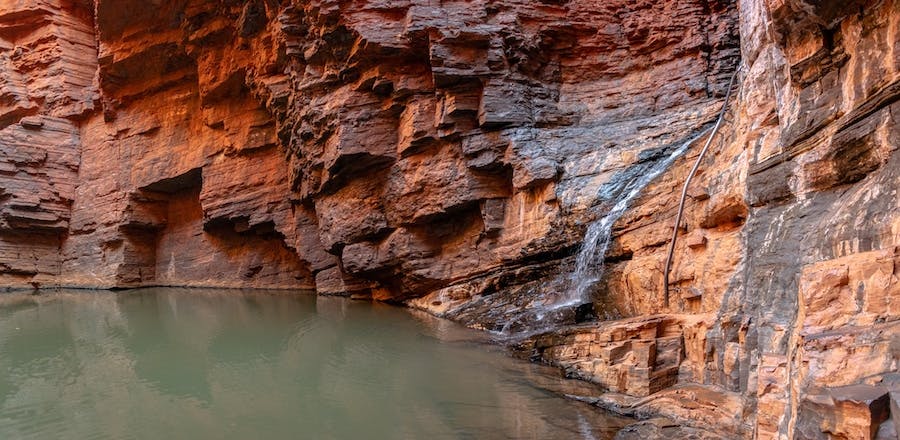
Marvel at the rock pools, sheer walls of red rock and if you’re game, tackle the out and back section to Handrail Pool (if the rangers have deemed it safe). Exit the gorge and head to the Junction Pool and Oxer Lookouts that give a fantastic look at the gorges from above and just how tight those spaces are. From there it’s a short walk to Hancock Gorge where you’ll find narrow ledges, pools of water you can wade through and the famous Spider Walk leading down to Kermits Pool. This one is for the adventure lovers and is a great deal of fun.
Where: Karijini National Park
Length: 5km (Combined Loops)
Difficulty: Hard
Best Time to Visit: April to August
Subscribe to our free newsletter!
Mount Bruce/Punurrunha (Karijini)
Located 1400km north of Perth in the Pilbara, Karijini is more famous for the stunning gorges, waterfalls and natural pools that are carved into the landscape. While it’s lots of fun to explore the deep crevices of ancient red earth, the hills of the Hamersley Range are home to the roof of Western Australia. While not the tallest point in WA, Mount Bruce is the second tallest at 1227m above sea level and a decent distance from the car park below.
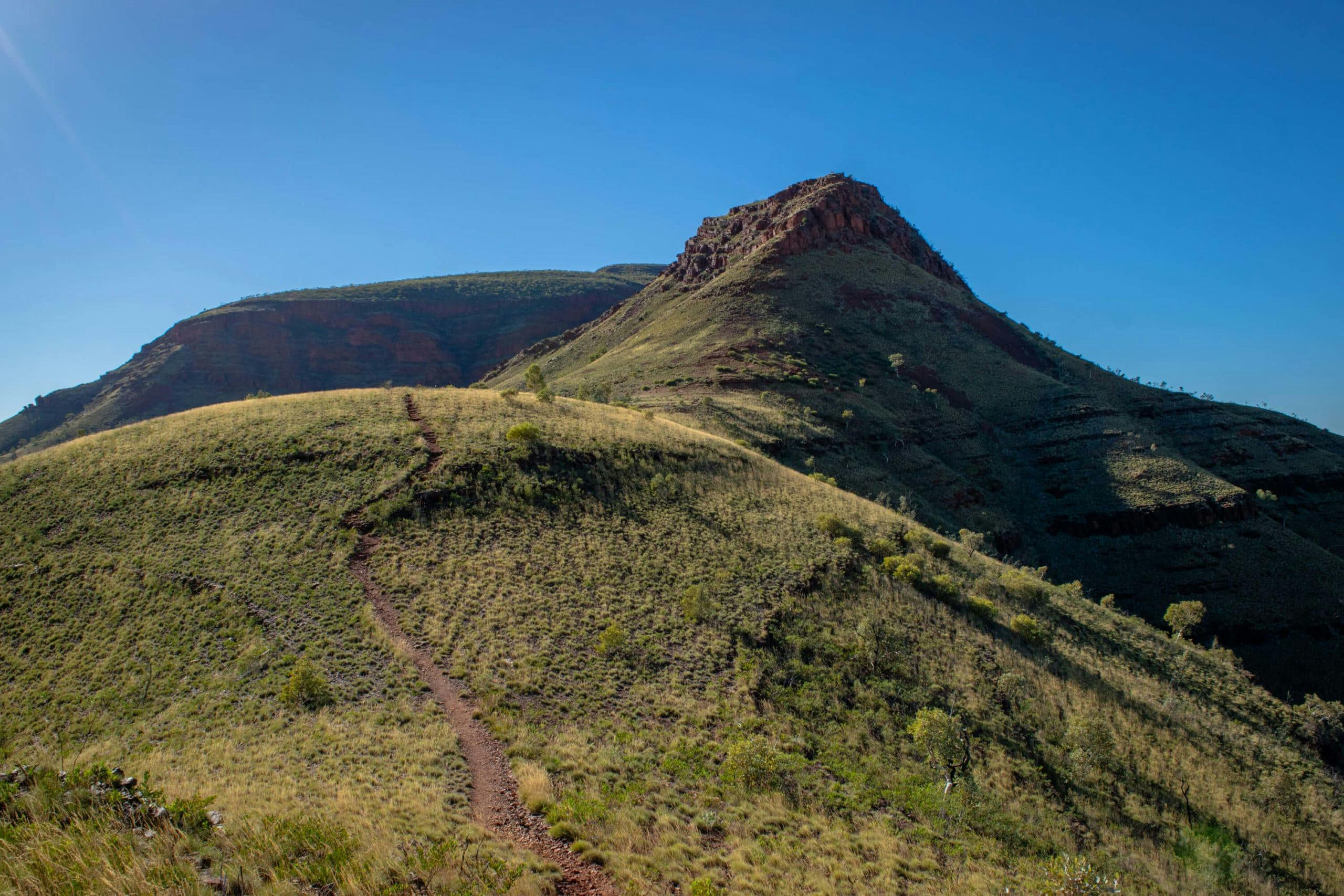
Snaking up three distinct levels, there are some spectacular views of the surrounding area culminating in the expansive summit that has a couple of side trails to explore. About half way up there is an adventurous chain shuffle that leads to a small scramble up towards the final stretch. With temperatures in the dry season ranging from the mid-20s to early 30s, this will always be a warm hike so remember to take plenty of water and if possible, hike in the early morning or late afternoon.
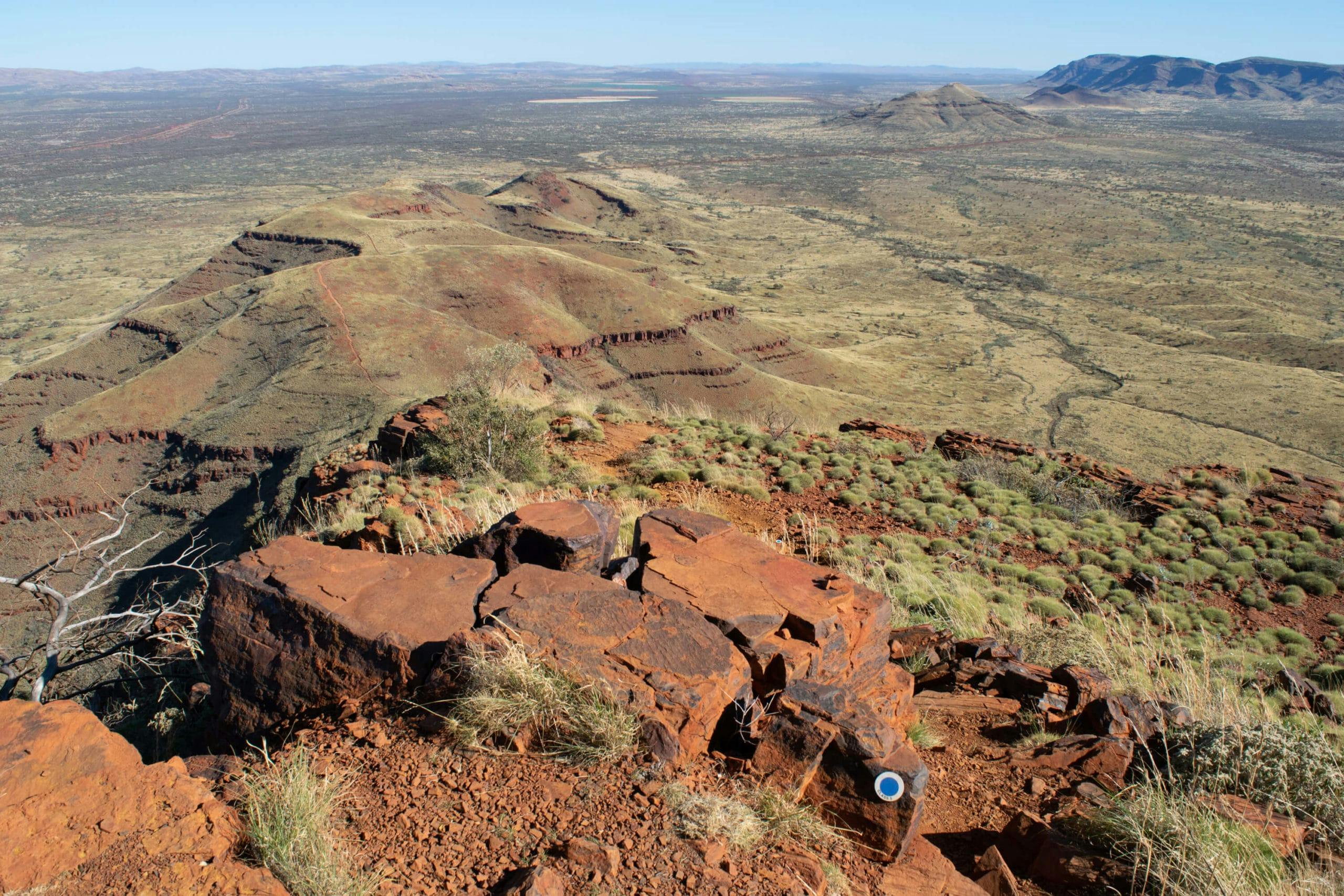
Where: Karijini National Park
Length: 10.8km (Return)
Difficulty: Moderate to Hard
Best Time to Visit: Winter/Dry Season
–
About the author and photographer:
Mark (The Life of Py) is a Perth based outdoor enthusiast that loves exploring the trails of Western Australia in his free time. When he isn’t out taking photos he is busy planning the next adventure. See more of his content here.